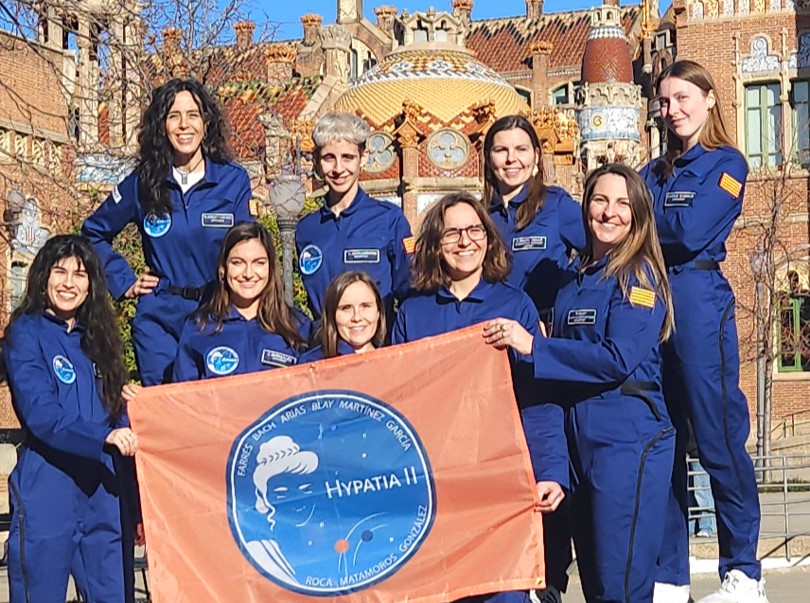Hypatia II will study the effects of a Martian mission on the female body

The Hypatia II mission started yesterday at the Mars Desert Research Station (MDRS)—the largest Mars surface research facility on Earth, located in the Utah desert, USA. This is the second Martian analog mission carried out by the Hypatia Mars association and will run until 15 February.
An all-female crew of 7 scientists (with two back-up astronauts) spanning different ages and disciplines will live in isolation during the mission, coinciding with the International Day of Women and Girls in Science (11 February). Among them is Estel Blay, Program Manager at the Institute of Space Studies of Catalonia (IEEC — Institut d’Estudis Espacials de Catalunya). She is working on the ESA Phi-LabNET Spain program, supporting innovation for the commercialisation of space technologies aimed at enhancing climate resilience.
The Hypatia II mission will study the female body under simulation conditions, as the female crew replicates a human mission to Mars over two weeks. Human factors to be investigated include menstruation, nutrition, physical activity, circadian sleep rhythms, and other stress-related biological variables, such as heart rate, body temperature, and blood oxygen levels, among others.
Blay will take on the role of Scientist & Health and Safety Officer of the mission and will be involved in several projects, such as studying solar panel efficiency for dusty Mars environments, developing optimal growth mechanisms for space and Earth-born tomatoes and designing a 24-hour space menu for astronaut health and performance.
Multidisciplinary research to assess the feasibility of a future mission to Mars
Currently, only 1 out of 10 astronauts are women. The lack of female astronauts has led to a significant data gap concerning space missions. One of the primary objectives of the Hypatia II mission is to enhance our understanding of the effects that a space mission could have on the female body, particularly during the long interplanetary journey. The research is being conducted in collaboration with leading hospitals and research institutes in Catalonia, including the Sant Pau Research Institute, Sant Pau Hospital, the Barcelona Institute for Global Health (ISGlobal), and Germans Trias i Pujol Hospital in Badalona.
The Hypatia II crew will conduct experiments and test equipment to assess the feasibility of a future mission to Mars, which will take place under isolated conditions with limited access to food, water, and communication with Earth, in an environment designed to mimic the terrain and conditions of the red planet. The mission involves a collaborative effort with more than 20 research institutions, universities, companies, and schools worldwide.
The European Space Agency is funding one of the satellite calibration projects. During extravehicular activities outside the MDRS, the Hypatia II crew will install a trihedral reflector in the Utah desert. This will enable satellites to position themselves accurately and measure terrain elevation, a technology already used to map oceans and glaciers.
